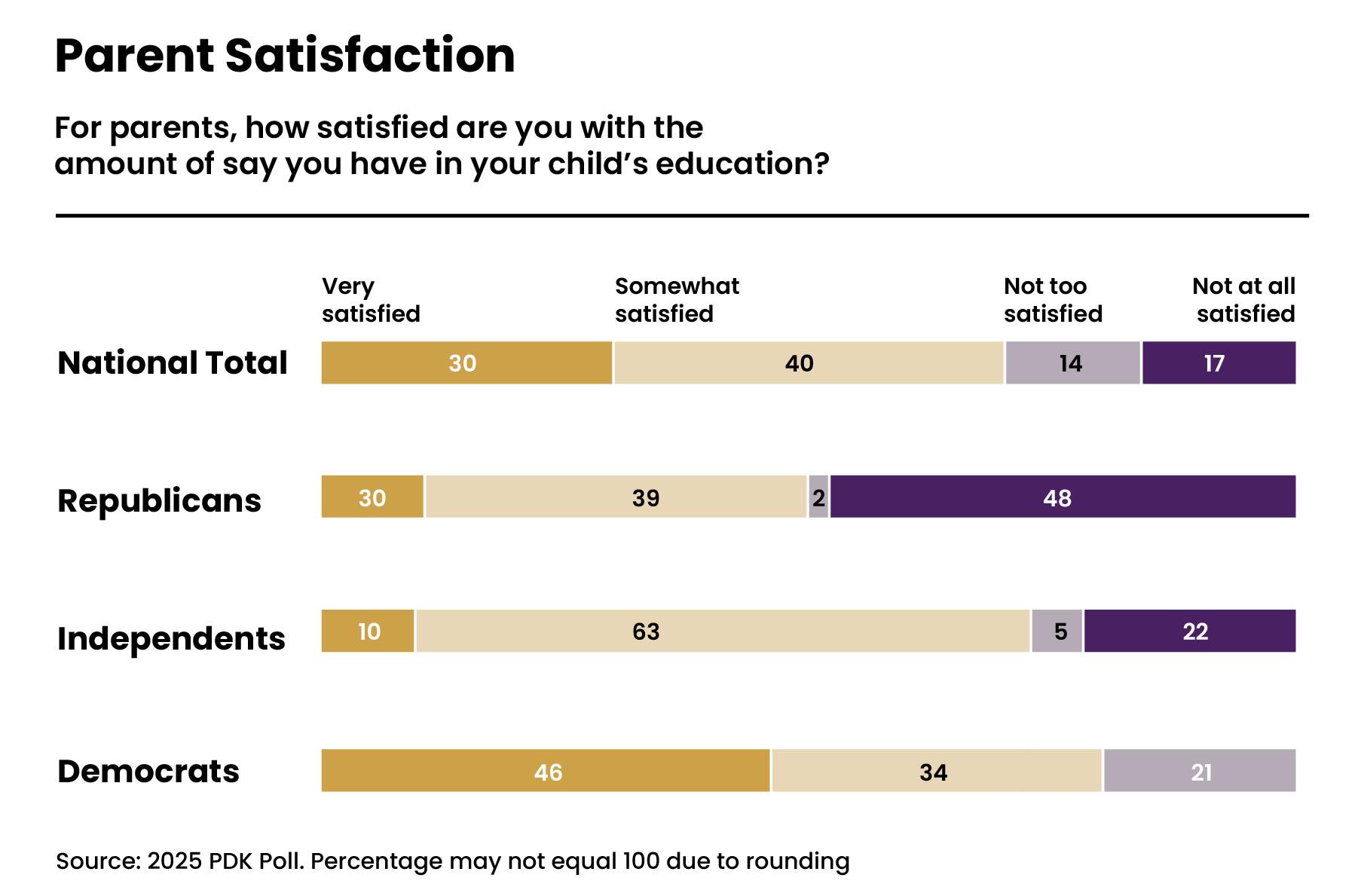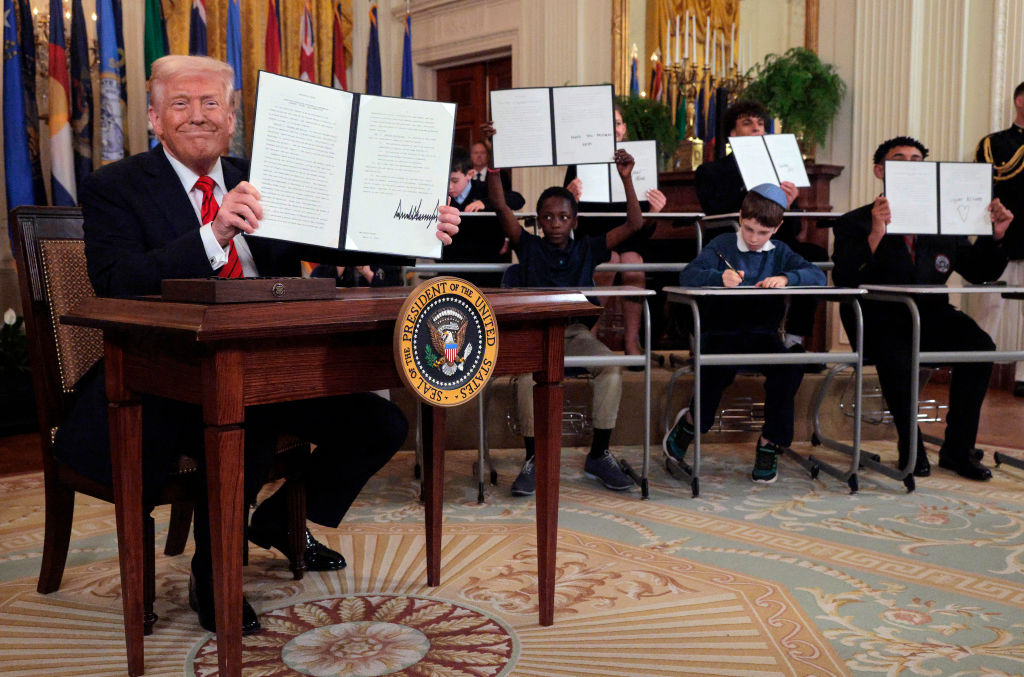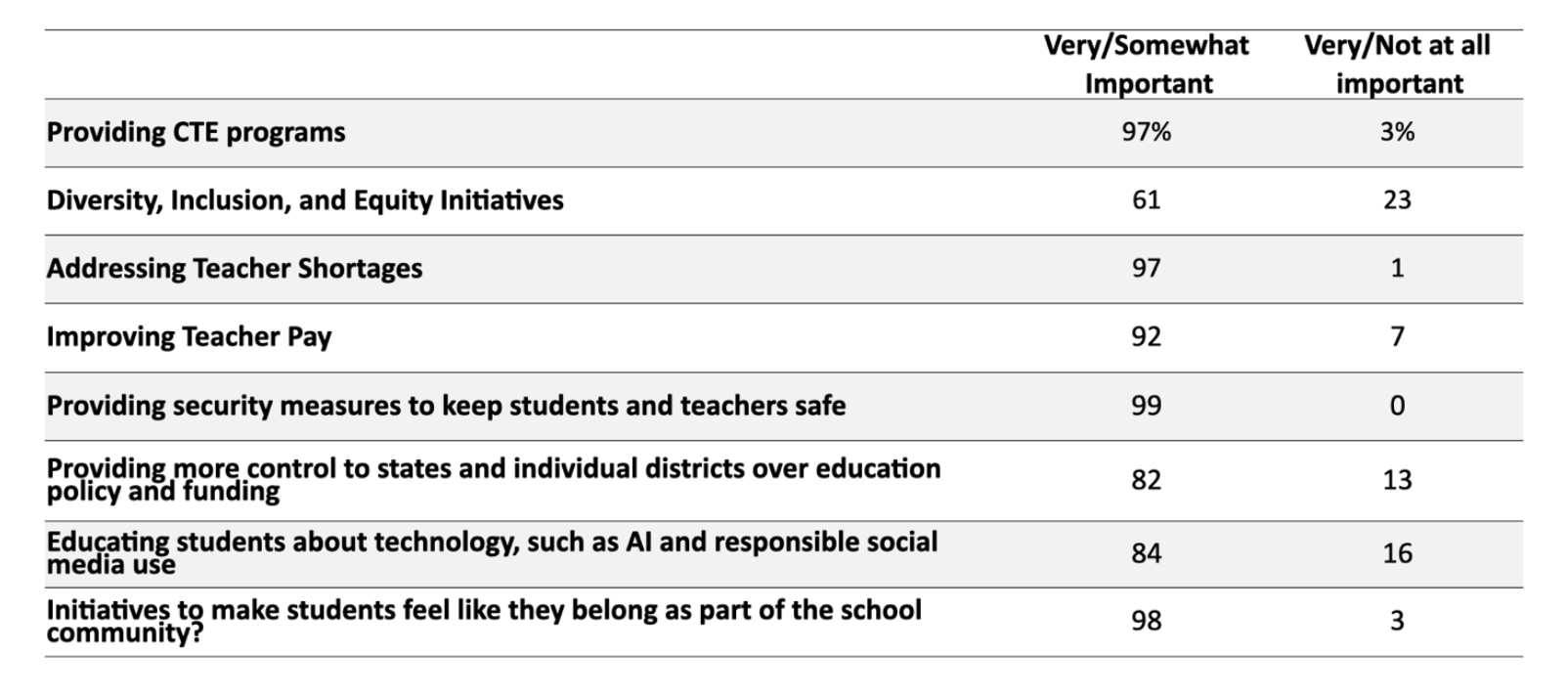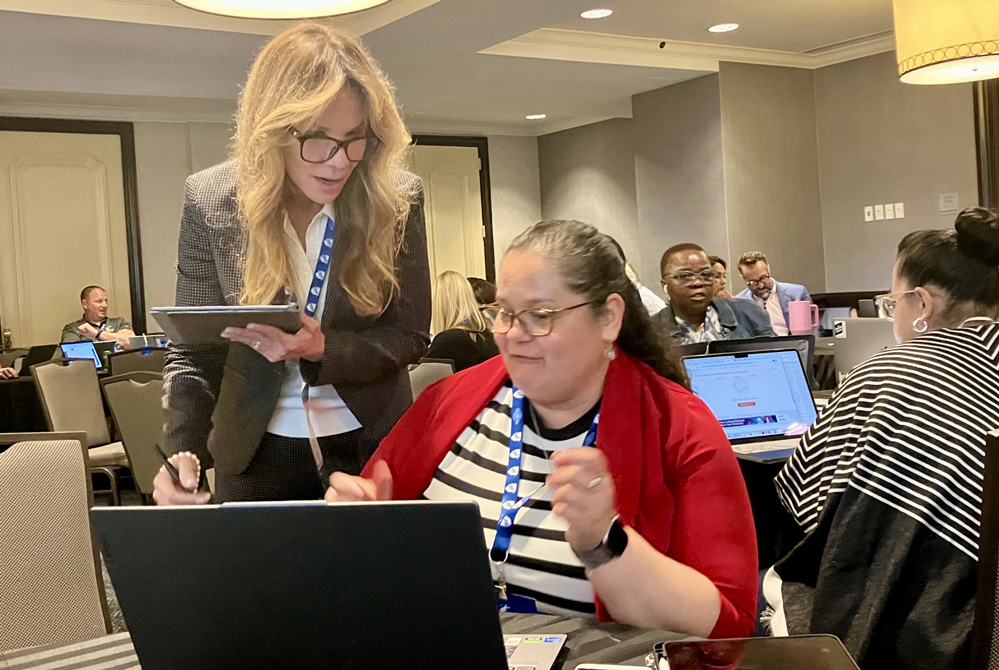Exclusive Poll: As Support for Schools Plummets, Americans Resist Closing Education Department
Latest PDK Poll also reflects rising embrace of private school choice, support for DEI and a backlash against artificial intelligence.

Get stories like this delivered straight to your inbox. Sign up for The 74 Newsletter
Americans’ confidence in its public schools is at an all-time low, with just 13% grading them an A or a B, according to this year’s PDK Poll. That’s down from 19% in 2019 and 26% in 2004.
As is typical, adults demonstrate far more positive attitudes toward the local schools in their own backyards, with over 40% grading them highly.
Even so, the results may help explain rising support among parents for private school choice. With 12 states now offering universal education savings accounts or tax credits that can be used for tuition or homeschooling, nearly 60% of parents say they would choose a private or religious school for their child if they were offered public funds. That’s up from 56% in 2020.
The poll figures offer further evidence of a post-pandemic shift toward alternatives to traditional public schools. In Florida, a majority of K-12 students now use some form of choice, from district magnet programs to homeschooling with state funds.
“COVID was a key factor in making people more open to choice,” said Douglas Harris, an economics professor at Tulane University and the director of the National Center for Research on Education Access and Choice. He noted that frequent disparagement from Republicans, led by President Donald Trump, have contributed to the public’s souring mood.

“It wasn’t until COVID that he started to really attack public schools, and saw the power of pulling that into his larger culture war,“ Harris said. “Is the message sinking in? No doubt. When politicians relentlessly bash any institution, support for that institution goes down.”
He cautioned against reading too much into the low percentage of Americans giving public schools high marks. Many of the 1,000 poll respondents may not have kids in school. While the average voter might be influenced by politics, public school parents answer questions based on their experiences, he said.
The poll from PDK International, a professional organization for educators, comes as the Trump administration pushes to dramatically reduce the federal government’s role in schools while also pressuring them to drop equity-focused programs. Responses show that Americans agree with the president in some areas, but reject other pieces of his agenda.
Closing the Education Department
Two-thirds of U.S. adults oppose eliminating the Education Department and say such a move would negatively affect students. Support for keeping the agency intact is highest among Democrats, but at least a third of Republicans agree it should stay open. Closing the department is far more popular among men (34% in favor) than women (9%).

Marc Porter Magee, CEO of 50CAN, a national education advocacy group, said that Americans “just aren’t super inclined” to get rid of programs.
“There is a certain ‘more is better’ kind of a vibe,” he said. Even among parents who opt to put their children in private school, many recognize the federal government’s role in holding states accountable for serving students with the greatest needs. “Protecting kids with disabilities probably polls quite well.”
Along with downsizing the department, which has shrunk to roughly half the size it was when Trump took office, the administration has taken aggressive steps to get schools and universities to eliminate diversity, equity and inclusion programs. Efforts to force schools to comply with anti-DEI orders are still tied up in court, but Trump recently claimed victory.
“The beautiful thing is, as you know, we’ve gotten rid of the woke. Woke is gone,” he told a reporter last month. “I think pretty well buried. We’re gonna make sure it’s buried.”
But that’s not necessarily what Americans want. Over 60% of PDK’s respondents say DEI is important, but there’s a partisan divide. Eighty-nine percent of Democrats support such initiatives, compared with 62% of independents and 22% of Republicans.
Opponents of equity-related efforts, like Nicki Neily, president of the conservative Defending Education group, say some schools have rebranded their DEI efforts to emphasize “belonging.” That term has nearly unanimous support from poll respondents. Ninety-eight percent consider initiatives that make students feel welcome at school to be important or very important — second only to keeping students and teachers safe, at 99%.
Over 90% of Americans say boosting teacher pay should be a high priority, and nearly two-thirds agreed that educators’ salaries are too low. It’s a more pressing issue for Democrats, like Vermont Sen. Bernie Sanders, who last month reintroduced legislation that would set annual teacher pay at a minimum of $60,000. Among Republicans, more than a third, 39%, agreed that teachers don’t earn enough.

Support for AI in schools drops
While it ranks lower than other topics, educating students about artificial intelligence and responsible social media use is a top concern for 84% of adults. The Education Department recently issued brief guidance on AI integration, saying that grant funds can be used for tools that personalize learning, supplement tutoring and help students make post-secondary plans.
Teachers and students are inundated almost daily with AI tools, like ChatGPT’s new “study mode,” a feature meant to help students solve problems “step by step,” rather than just giving them the answer. Khan Academy offers an AI tutor, and research shows some AI tutoring offers promising results.
But Americans’ enthusiasm about AI’s potential in education has dropped since last year. Less than half of respondents support or strongly support teachers using AI to create lesson plans, down from 62% in 2024. Thirty-eight percent of adults think it’s fine for students to use AI to complete their homework, a drop from 43% last year.

Kyla Johnson-Trammell, who recently stepped down after eight years leading the Oakland Unified School District in California, said she’s not surprised about Americans’ deepening skepticism.
“At the end of the day, learning happens when kids have a relationship with the teacher and when they’re engaged in human connection,” she said. But she also sees value in using AI tools to solve specific dilemmas. A teacher might grade 30 essays, but can then use AI to “look for trends across all those papers, like ‘a majority of your students need help being able to write a clear thesis,’ ” she said. “Technology can do that.”
Most educators who try AI don’t stick with a tool more than seven days during a three-month period, according to an analysis released last week by Stanford University’s Generative AI Education Hub. The report, based on data from 9,000 teachers, showed that the 40% who become regular users lean toward teacher-focused chatbots rather than AI assistance for students.
The rapid development of AI for educational purposes comes as more states enact policies to ban cellphone use during the school day. At least 20 states have restrictions in place, and while it focuses on college freshman, a new international study finds increases in academic performance once a ban is enforced.
The public largely supports such policies, the poll found. Forty percent agreed with a full-day ban, while 46% said students should only be able to use their phones during lunch and class breaks.
Some experts are frustrated by the apparent contradiction.
“This is what I find so completely surreal about the current moment,” Benjamin Riley, who writes about learning and generative AI, posted on BlueSky last month. “We can’t even say smartphones are being ‘memory holed’ because the bans in schools are happening quite literally at the same time as various ed-tech hucksters are falling all over themselves to push AI into the classroom. Wake up!”
Porter Magee said he worries about the “downstream” effects of devices on student habits, including trouble focusing and a continued decline in reading for fun.
“It feels like we’re swimming against a tough tide,” he said.
Get stories like these delivered straight to your inbox. Sign up for The 74 Newsletter

;)
